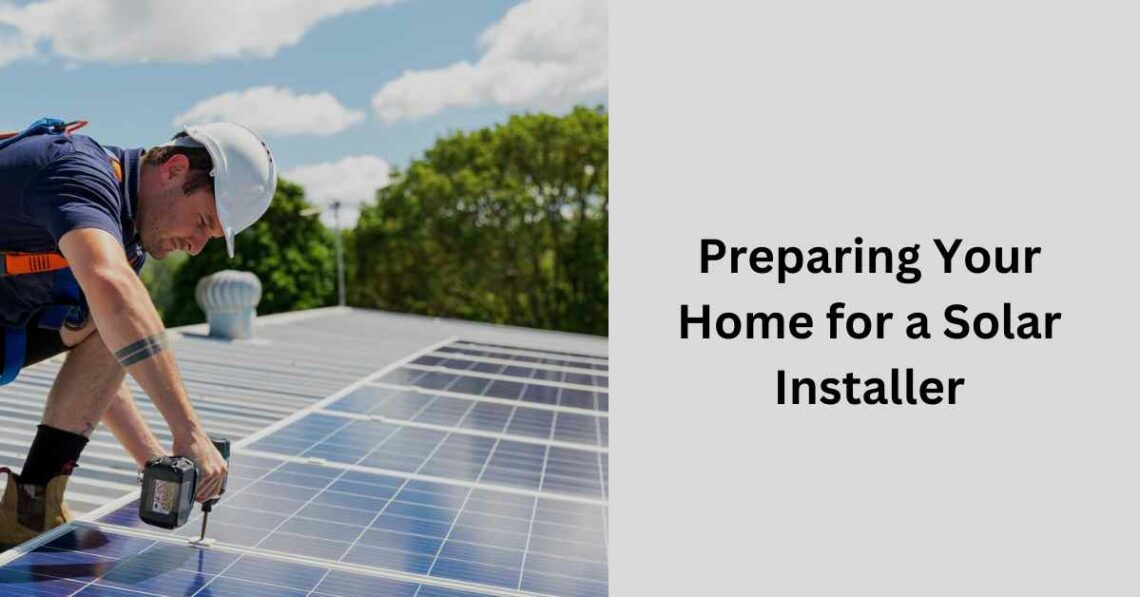
Preparing Your Home for a Solar Installer In 2023
Solar systems can help lower your home’s energy bills and carbon footprint. Start preparing your transition to this eco-friendly energy solution by determining your energy needs and researching local solar installers. Here are five things you can do to prepare for your solar installation:
1. Know Your Energy Requirements
Review your one-year electricity usage history to determine your annual energy requirements in kWh. Next, decide whether you will use solar power for part or all of your energy needs.
The most cost-effective option is to install a system that covers 100% of your power needs, but the size of your solar system will depend on the amount available space on your property.
Solar installers will use the information about your energy needs and goals to determine the size of panels you need.
2. Inspect Your Roof
Find a professional to inspect your roof’s condition and determine its ability to support the solar panels’ weight. Complete all roof repairs before installing solar panels to prevent moving the panels for maintenance.
Check for vents and fittings within the intended solar panel installation area and move them in advance. If your roofing is nearing the end of its lifespan, consider replacing it before installing solar.
Installing a solar system on top of your new roof can help protect it and extend its lifespan by shielding it from the elements.
3. Select Location for Installation
Identify an area with maximum sunlight exposure to get the most out of your solar system. Take the time to remove or prune trees shading your chosen location. In the northern hemisphere, the optimal location is a south-facing roof.
If your home does nothave a south-facing roof, a few extra panels on an east or west-facing roof will do. Consider your roof’s pitch, as flat roofs need special equipment to create the right angle for the panels. Extreme roof slopes are not suitable for solar panel installation.
If your roof has an extreme pitch, select a ground-mount solar system. Install the ground-based system close to your utility interconnection for lower installation costs and higher efficiency.
4. Decide Between a Meter and a Battery
Making the decision between a grid-tied meter and solar batteries depends on your budget and circumstances. Solar batteries store extra energy that panels generate for use at night or during storms. Solar batteries may cost more but provide additional dependability and security.
With net metering, you can get paid for any extra power your solar panels produce. The power grid then uses this extra energy to supply power to more residences or commercial establishments.
Net metering solutions vary by state and utility company, as some provide basic savings, while others enable you to earn monthly.
5. Research Local Regulations and Incentives
You must obtain local building and utility approvals to start your solar installation project. Learn about the documentation you need, including a building plan, equipment requirements, and the electrical layout of the system. Professional solar installers can help you file these documents.
Research local and federal government incentives and the necessary paperwork and applications. The federal government offers a 26% tax credit to homeowners who install solar panels and have obtained all the necessary licenses. Many states offer additional tax breaks to homeowners who switch to solar energy.
Find the Right Solar Installers
Explore several solar contractors and panel manufacturers to find the best systems and installers. Experienced solar installers will advise you on the best procedures and inform you about all permits, local or state restrictions, and available incentives.
Contact a reputable solar installer today to learn more about how you can prepare your home or property for a solar installation.
You May Also Like

Navigating the Digital Classroom: A Guide to CSU Blackboard
January 30, 2024
Coated Vs Uncoated Guitar Strings – Which One Is Better?
February 20, 2023

